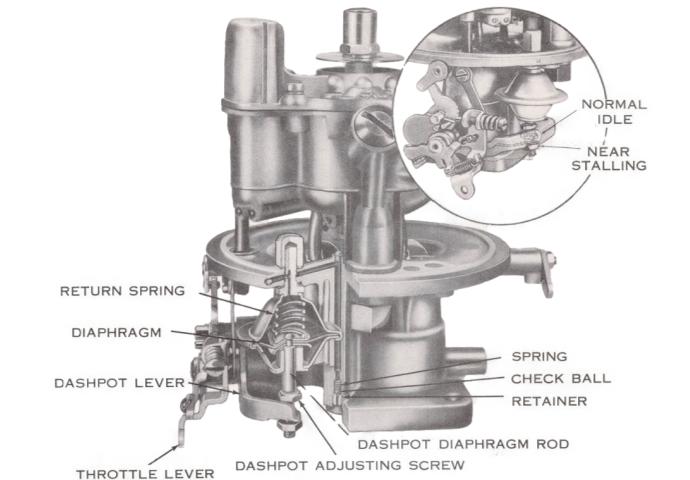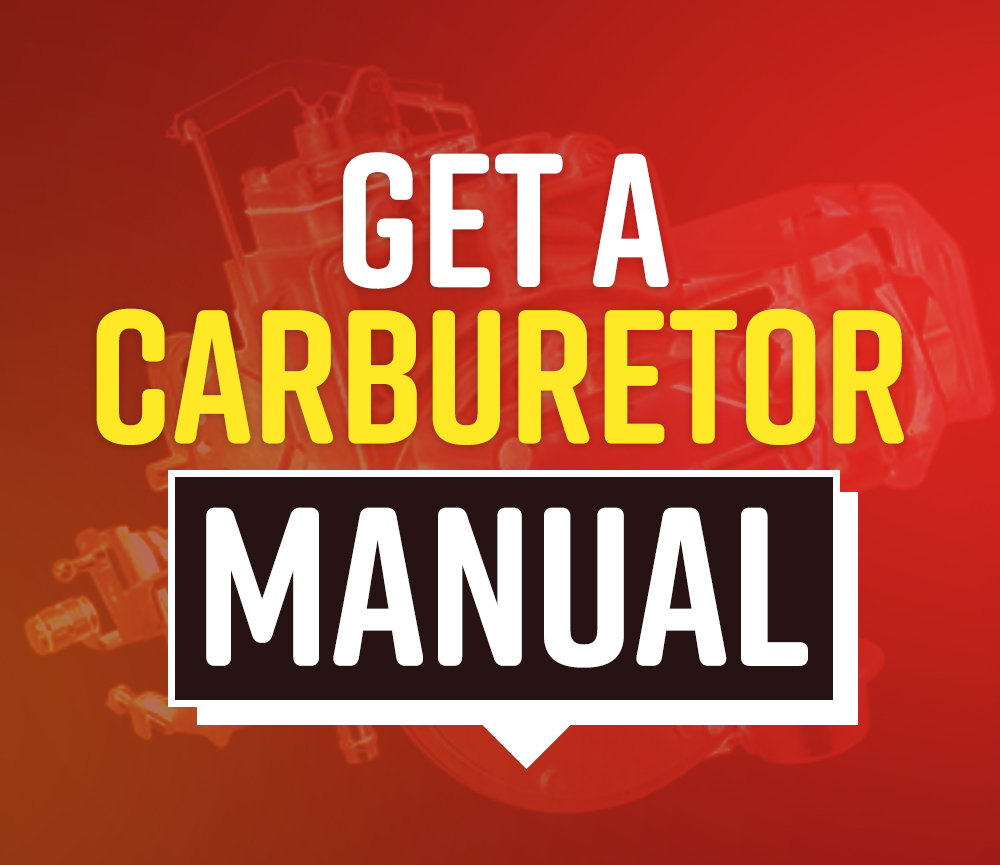
On Mercury vehicles equipped with automatic transmissions, a dashpot is incorporated with the carburetor to prevent loading of the engine when the accelerator pedal is suddenly depressed and released. The dashpot accomplishes this by retarding the closing rate of the throttle plates in the last few degrees of their rotation approaching the closed or idle position. Slowing the rate of travel of the throttle plate gives the engine time to dissipate the charge of raw accelerating fuel in the intake manifold. A check valve added to the dashpot system allows quicker recovery by the dashpot, thus giving anti-stall protection even for sudden repeated deceleration. This improved dashpot system will also open the throttle plates during idle should manifold vacuum approach the stalling point of the engine. The dashpot will then hold the throttle plates open until sufficient manifold vacuum is again developed to allow the plates to close.
As the accelerator pedal is released, the throttle return spring in the accelerator pedal linkage acts to close the throttle plates simultaneously with the release of the accelerator pedal. When the throttle plates approach the closed or idle position, the head of the dashpot adjusting screw in the dashpot lever contacts the diaphragm rod of the dashpot. The tension of the throttle return spring, coupled with the force of high manifold vacuum transmitted through the dashpot passage in the throttle body to the dashpot diaphragm, compresses the dashpot rod. The remaining few degrees of throttle plate travel are slowed to a rate governed by the amount of air bleeding out of the dashpot through the small air bleed in the dashpot passage check valve retainer in the throttle body.
If the accelerator pedal is again suddenly depressed, the dashpot lever will move downward, away from the dashpot rod. The dashpot return spring will move the rod downward. However, the small air bleed in the dashpot passage check valve retainer will not allow a sufficient flow of air into the dashpot to allow the rod to immediately return to the extended position. During this period, manifold vacuum will be weak, due to the suddenly opened throttle plates. The dashpot return spring, pressing downward on the diaphragm, creates a vacuum in the dashpot passage to draw the check valve ball off its seat, thus presenting a large opening through which the dashpot can draw air to immediately recover and prepare for repeated sudden deceleration.
When the engine is at idle, the dashpot rod is held up, compressing the dashpot return spring. The tension of the throttle return spring acting through the dashpot lever and high manifold vacuum metered through the bleed in the check ball retainer to the dashpot diaphragm hold the rod in this position. If the engine begins to stall, manifold vacuum will drop. When this occurs, the vacuum trapped in the dashpot passage lifts the check ball. This weakens the vacuum in the dashpot passage and the tension of the compressed dashpot return spring forces the dashpot stem down to open the throttle plates. When engine speed increases, manifold vacuum acting through the check ball retainer bleed becomes strong enough to assist the throttle return spring in returning the dashpot rod to its original position. As the dashpot rod returns to this position, the throttle plates close to the idle position. The check ball in the dashpot passage is held against its seat by a spring in earlier models of this carburetor. In the later models the spring has been replaced with a cylindrical weight which accomplishes the same purpose.

